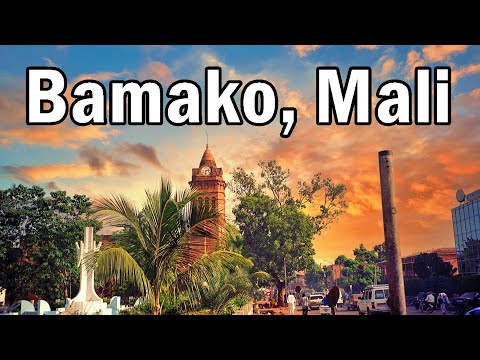
Nestled on the banks of the Niger River, Bamako, the bustling capital of Mali, offers a vibrant mix of modern urban life and rich cultural heritage. As the largest city in the country with a population continuously growing, Bamako serves as Mali’s center of commerce, culture, and education. For tourists seeking an authentic African experience with a French colonial twist, Bamako’s eclectic charm is undeniable. Here’s your guide to exploring this dynamic city.
### 1. **Musée National de Bamako**
Start your tour at the Musée National de Bamako, which serves as a cultural beacon for Mali and a must-visit for anyone wanting to understand the country’s ethnographic history and art. The museum showcases an impressive collection ranging from traditional masks and costumes to archaeological artifacts that narrate stories from Mali’s prehistoric times to its present-day cultural practices.
### 2. **Parc National du Mali**
Adjacent to the museum is the Parc National du Mali, which was renovated and expanded in partnership with the Aga Khan Trust for Culture. It is not only a place where locals seek respite from their bustling city life but also an attraction where visitors can enjoy beautifully landscaped gardens, endemic plants, and recreational facilities including jogging paths, sports fields, and even a swimming pool.
### 3. **Bamako Grand Mosque**
Another notable site is the Grand Mosque of Bamako. Located in the heart of the city, this mosque stands as a testament to Islamic architecture in West Africa. Despite being less ornate than those found in North Africa or the Middle East, it resonates with profound spiritual significance for local Muslims.
### 4. **Maison des Artisans**
For those interested in arts and crafts, Maison des Artisans is an essential stop. This bustling complex is filled with local artisans showcasing their talents through products like traditional textiles (bogolan), wood carvings, jewelry, leather goods and pottery. It’s both an ideal place for picking up souvenirs and observing skilled craftsmen at work.
### 5. **Bamako Artisanal Market**
Continuing on your shopping excursion head towards Marché Artisanal de Bamako where you’ll find everything from colorful fabrics to handcrafted musical instruments like djembes (West African drums). It’s an excellent spot for interacting with locals while discovering unique crafts that symbolize Malian culture.
### 6. **Point G Hill**
For panoramic views of Bamako stretching into horizons cut by River Niger loop your way towards Point G Hill where you can also discover ancient rock paintings preserved inside caves adding another layer to your historical exploration in Mali.
### 7. **Nightlife**
After sundown consider diving into Bamako’s vibrant nightlife; venues like Bla Bla Bar or Le Diplomate offer live music ranging from traditional Malian sounds to modern Afrobeat performances that keep visitors entranced till late hours.
### Practical Tips
– **Language:** French is widely spoken due to colonial history; however local languages such as Bambara are prevalent.
– **Currency:** West African CFA franc (XOF) is used extensively.
– **Best Time To Visit:** The cooler months between November through February are most comfortable for visiting.
– **Travel Safety:** As always check travel advisories prior traveling given varying regional stability issues.
Bamako might not feature prominently on typical tourist maps but offers an enriching experience lined with unfiltered cultural interactions that embody West Africa’s soulful essence far beyond surface-level encounters making it truly worth any traveler’s itinerary exploring this side of Sahel region!
